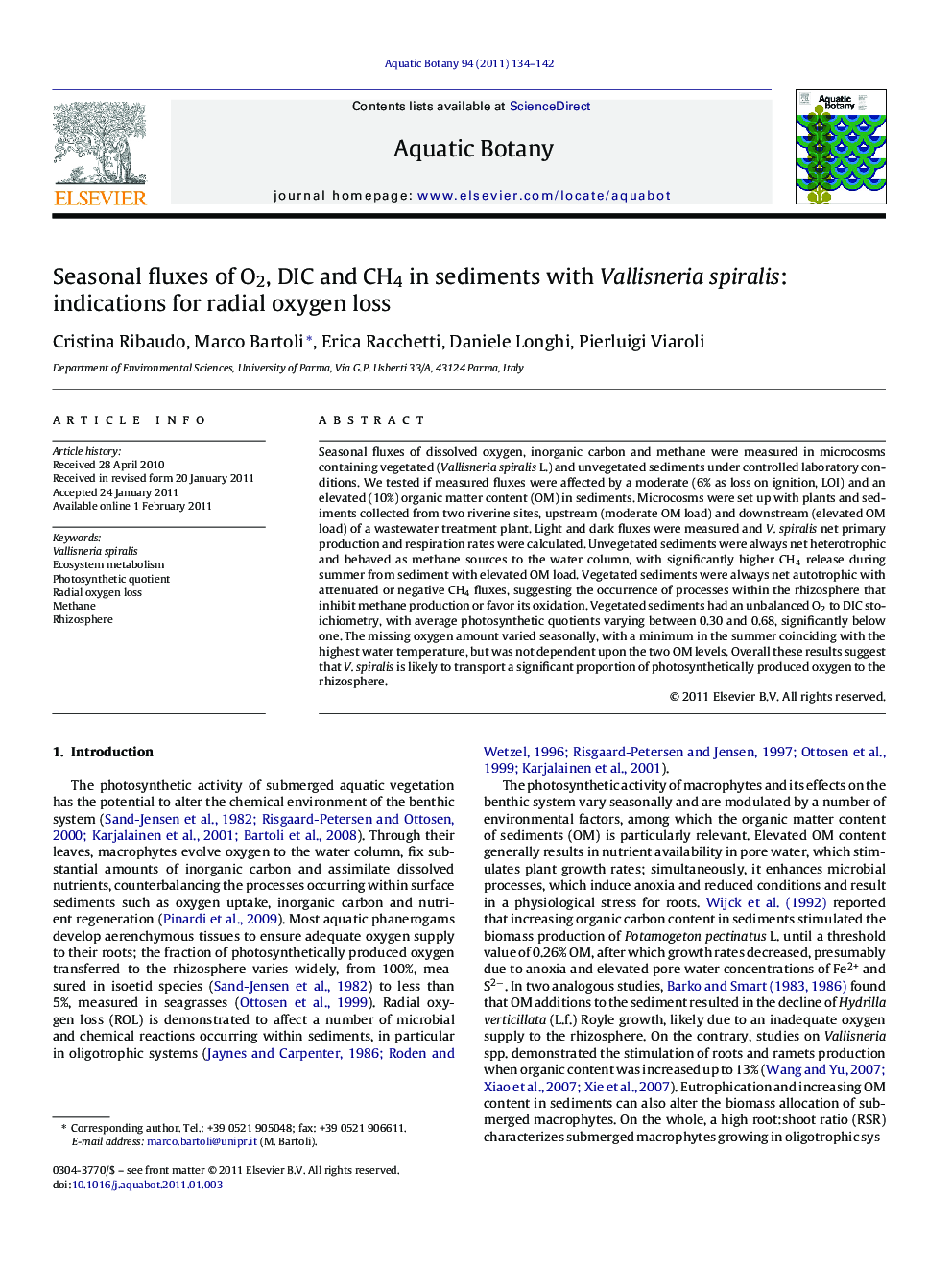| Article ID | Journal | Published Year | Pages | File Type |
|---|---|---|---|---|
| 4528206 | Aquatic Botany | 2011 | 9 Pages |
Seasonal fluxes of dissolved oxygen, inorganic carbon and methane were measured in microcosms containing vegetated (Vallisneria spiralis L.) and unvegetated sediments under controlled laboratory conditions. We tested if measured fluxes were affected by a moderate (6% as loss on ignition, LOI) and an elevated (10%) organic matter content (OM) in sediments. Microcosms were set up with plants and sediments collected from two riverine sites, upstream (moderate OM load) and downstream (elevated OM load) of a wastewater treatment plant. Light and dark fluxes were measured and V. spiralis net primary production and respiration rates were calculated. Unvegetated sediments were always net heterotrophic and behaved as methane sources to the water column, with significantly higher CH4 release during summer from sediment with elevated OM load. Vegetated sediments were always net autotrophic with attenuated or negative CH4 fluxes, suggesting the occurrence of processes within the rhizosphere that inhibit methane production or favor its oxidation. Vegetated sediments had an unbalanced O2 to DIC stoichiometry, with average photosynthetic quotients varying between 0.30 and 0.68, significantly below one. The missing oxygen amount varied seasonally, with a minimum in the summer coinciding with the highest water temperature, but was not dependent upon the two OM levels. Overall these results suggest that V. spiralis is likely to transport a significant proportion of photosynthetically produced oxygen to the rhizosphere.
Research highlights► Fluxes of oxygen, inorganic carbon and methane were measured seasonally in Vallisneria spiralis vegetated and bare sediments with moderate (6%) and elevated (10%) organic matter content. ► Vegetated sediments were net inorganic carbon sinks and attenuated methane efflux while bare sediments were inorganic carbon and methane sources and oxygen sinks. ► Oxygen and inorganic carbon fluxes in sediments with V. spiralis were unbalanced likely due to oxygen transport to the rhizosphere. ► Calculated photosynthetic quotient varied seasonally, with a minimum in summer, but was not influenced by organic matter level. ► V. spiralis has evolved adaptations that allow its growth in organic substrates.
